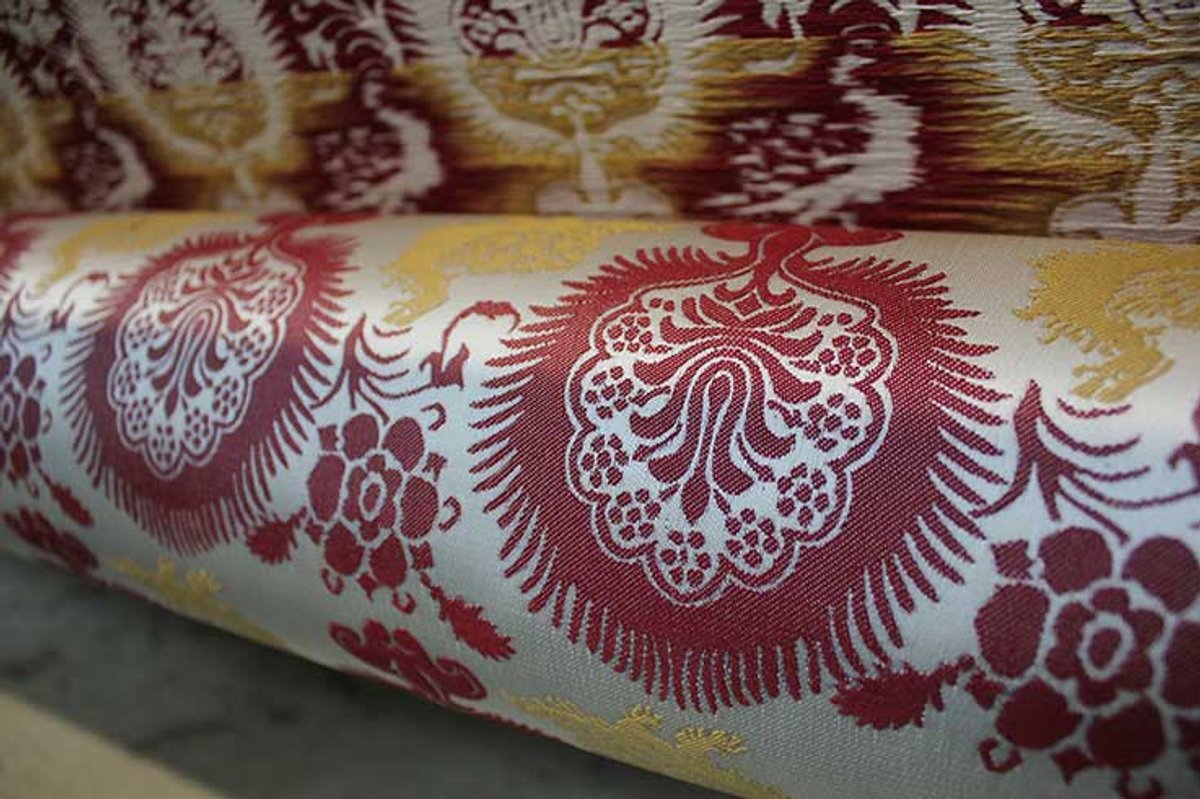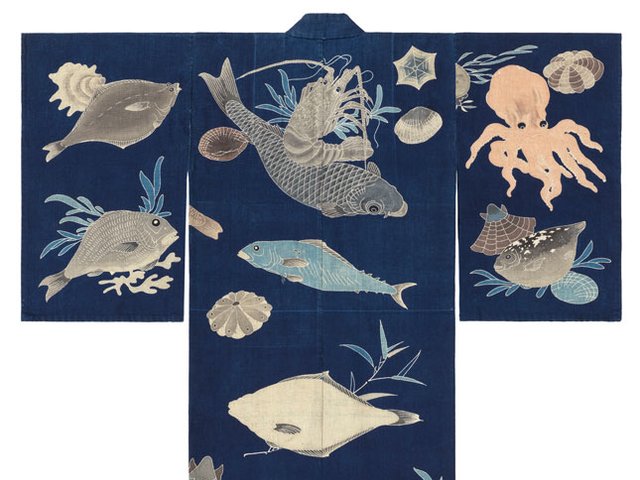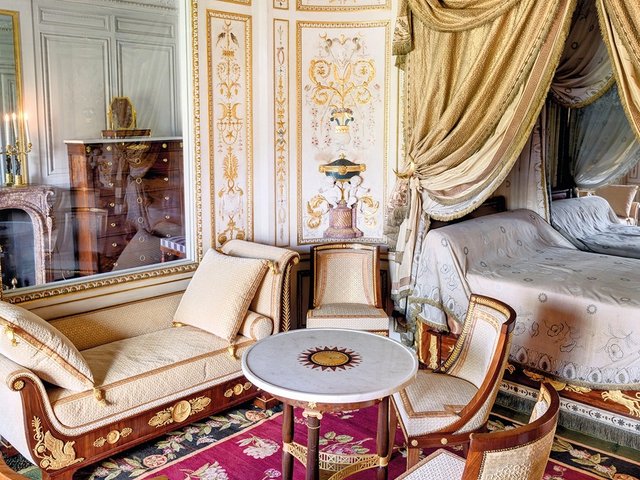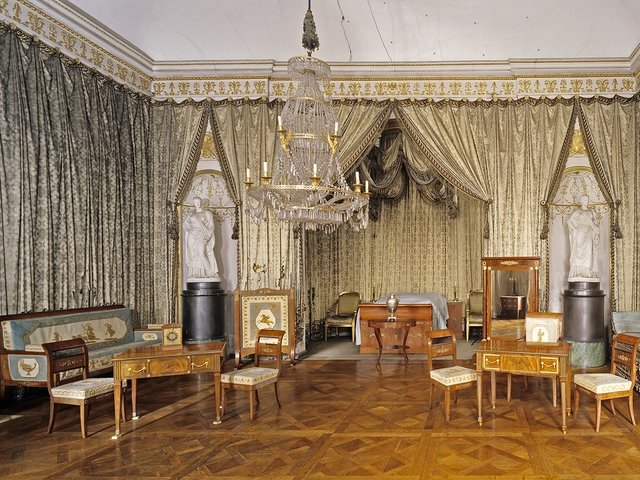Tiny silk fragments from a ceremonial robe that a bishop was buried in almost 550 years ago have been pieced together to make a recreation of the sumptuous red and purple fabric. The fragments have been on long-term loan to Norwich Castle since their discovery in 1899, when the tomb of the bishop, Walter Lyhert (d.1472), was opened during building works at Norwich Cathedral.
“The people who opened the tomb could see that [Lyhert] had been buried in absolutely splendid attire,” says Agata Gomolka, the project assistant curator for the redevelopment of Norwich Castle, which reopened in August after ten years.
Small pieces were taken as samples more than a century ago; most of these were kept in Norwich, though around 16 fragments were donated to the Victoria and Albert Museum in London. “They seem to have taken out just the best pieces, washed them and then folded the edges and pressed them,” Gomolka says. “The original fragments have little holes from a thread, so they must have been put on some sort of board for display—there may have even been private exhibitions of these fragments at some point.” Too fragile for long-term display, the fabric pieces have rarely been seen since then.
The project was part of the £23m redevelopment of the Norman keep at Norwich Castle Museum and Art Gallery in the east of England. Working with Norwich Cathedral and Gainsborough Silk Weaving in Suffolk, with the support of Norwich’s Costume and Textile Association, the Castle Museum planned to display the newly recreated fabric to show the splendid colour and pattern of the original silk vestments alongside some of the fragments, on rotation to avoid their deterioration.
Initial research on the fragments revealed two designs: “Design A” features the monogram M, which may stand for Mary, and floral designs that look like tulips. Gomolka’s research uncovered a very similar fabric depicted in Coronation of the Virgin (1358) by Paolo and Giovanni Veneziano, which is in the Frick Collection in New York.
“Design B” also has floral elements, including pomegranates, alongside birds that Gomolka believes to be phoenixes, rarely depicted in 15th-century silk patterns. The phoenix “can be seen as a symbol of Christ, because it also dies and rejuvenates,” says Gudrun Warren, the librarian and curator at Norwich Cathedral. Scholars who attended a conference for the study of silk road textiles in Norwich in 2023 examined the fabrics, suggesting design influences from Chinese to Islamic.
To recreate the fabric, the specialists used high-resolution photographs to update the design drawing that the Victorians had made of the pieces in 1899. “The fragments gave just enough information about the complete pattern repeat,” Gomolka says. The next step was chemical testing of the fibres. Analysis of the metal thread within the designs at the University of East Anglia revealed that gilded silver thread was used for the phoenixes.
A series of dye tests conducted by scientists at the British Museum and KIK-IRPA in Brussels showed two original colours of madder red and orchil purple in Design A, and madder red in Design B. Madder dye was used to create the new fabric but, for practical reasons, the areas that had been in gilded metal were captured in a gold colour thread, and in place of the orchil, originally made from lichens, a synthetic purple was used.
After two years of research, refinement and production, the pieces are now on display at Norwich Castle, and a limited amount of the recreated silk will be available for visitors to buy.
Norwich Cathedral hopes to make a set of copes (long, ceremonial cloaks worn by clergy) from the recreated fabric so they can be used during services, bringing the recreated fabric back to the building where it was originally used.





